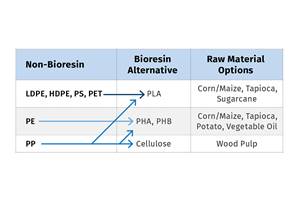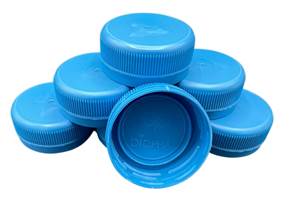Mold Can Infiltrate & Weaken Bio-composite Materials
Research looks at if and when mold will grow on bio-materials and how it might affect the final product.
New research from the University of British Columbia’s (UBC’s) School of Engineering shows that mold is proving to be increasingly important in the arena of engineering materials and can lead to early deterioration and structural failure. This is particularly the case as manufacturers adopt more bio-derived materials in the drive toward a ‘greener future’, according to researcher Bryn Crawford.
A multi-disciplinary team of researchers at UBC’s Okanagan campus from the Composites Research Network and the Department of Biology, working in collaboration with MIT and the National Research Council of Canada, has been studying the development and application of bio-sourced composites—specifically flax and hemp fibers. Both materials are plentiful in Canada and can be mixed with other materials—including a range of thermoplastics—to create cheaper, recyclable, and effective composite material products that are used by a wide range of industries, including transportation.
“Canada has a lot of biomass that can be used to produce materials that are both light and inexpensive…We are looking at ways of using biomass in engineering, but there is a level of natural deterioration in these products that is still not fully understood,” explains Crawford.
In the study, researchers conducted a number of experiments to determine if and when mold will grow on bio-materials and how it might affect the final product. “When we bring microbiology into engineering, it raises some extra questions; some questions we’ve never thought about before…But, because we’re now using biological matter, we have to think of fungal growth and how this fungal growth will affect a product’s performance,” says Crawford.
The researchers examined flax and hemp fibers alongside other natural materials to determine what would happen over time to these fibers. They created ‘fiber sheets’ and then added fungi to some, water to others, and left another group of sheets untreated.
Researchers were not surprised that the materials grew mold, the idea of the project was to determine the types of environment where the fungal sports would grow and then test mechanical properties of the affected materials. The team conducted a variety of tests examining them for strength, stiffness, or the amount of energy that could be absorbed before the bio-composite materials failed. They also used scanning electron microscopy to take an extreme close-up of the interior of the sample to determine fungal growth patterns, examining fractures, and failure zones.
“It was a huge experiment and we found that in both the hemp and flax fibers, when no fungi were added, we still had fungi growing…Basically, when raw natural fibers are exposed to high relative humidity, mold will grow and the potential for premature structural failure can occur.” Crawford notes that this susceptibility to mold growth is important for supply chains and factories to understand and manage, in order to ensure they are creating durable and robust products.
“Bio-composites made from natural fibers are good for both the environment and the economy and could help usher in the next revolution in manufacturing. More multi-disciplinary research of this kind is vital to producing high-quality and durable bio-composite materials that help make that leap,” sums up Crawford.
Related Content
How Yeast Could Give Rise to Bioplastic
Researchers work to scale up a biomanufacturing process for succinic acid, an important building block for industrial chemicals and a biopolymer precursor.
Read MoreHow to Optimize Your Molds and Hot Runners for Processing Bioresins
Demand for bioresins is growing in molded goods, particularly as a sustainability play to replace fossil-fuel based materials, but these materials are not a drop-in replacement for traditional materials. Molds and hot runners need to be optimized for these materials.
Read MorePHA Compound Molded into “World’s First” Biodegradable Bottle Closures
Beyond Plastic and partners have created a certified biodegradable PHA compound that can be injection molded into 38-mm closures in a sub 6-second cycle from a multicavity hot runner tool.
Read MoreNPE2024 Materials: Spotlight on Sustainability with Performance
Across the show, sustainability ruled in new materials technology, from polyolefins and engineering resins to biobased materials.
Read MoreRead Next
Lead the Conversation, Change the Conversation
Coverage of single-use plastics can be both misleading and demoralizing. Here are 10 tips for changing the perception of the plastics industry at your company and in your community.
Read MorePeople 4.0 – How to Get Buy-In from Your Staff for Industry 4.0 Systems
Implementing a production monitoring system as the foundation of a ‘smart factory’ is about integrating people with new technology as much as it is about integrating machines and computers. Here are tips from a company that has gone through the process.
Read More












